How to Grow Fresh Herbs All Winter (In Any Climate!)
Gathering around the table for a delicious meal with good friends and family is one of the longest standing holiday traditions. Whether you’re hosting Thanksgiving dinner or bringing your favorite dish to a potluck, using fresh herbs from your garden can enhance any recipe. Fresh herbs from the market are often just as delicious, but what’s more convenient than having a selection of fresh herbs growing just outside your door or right on your kitchen counter? And when was the last time you bought a bunch of fresh sage or rosemary and used the entire thing before it went bad? Having an herb garden allows you to harvest just as much as you need for your recipe.
Growing a thriving herb garden through the fall and winter months is an option for gardeners in every zone; however, the varieties and methods will vary.
For those of us in warmer southern climates, there are plenty of wonderful fall and winter herbs hardy enough to thrive outdoors. For others whose garden will be buried in three feet of snow by Thanksgiving, there are plenty of options for growing herbs year round near a bright window.
Outdoor Herb Garden
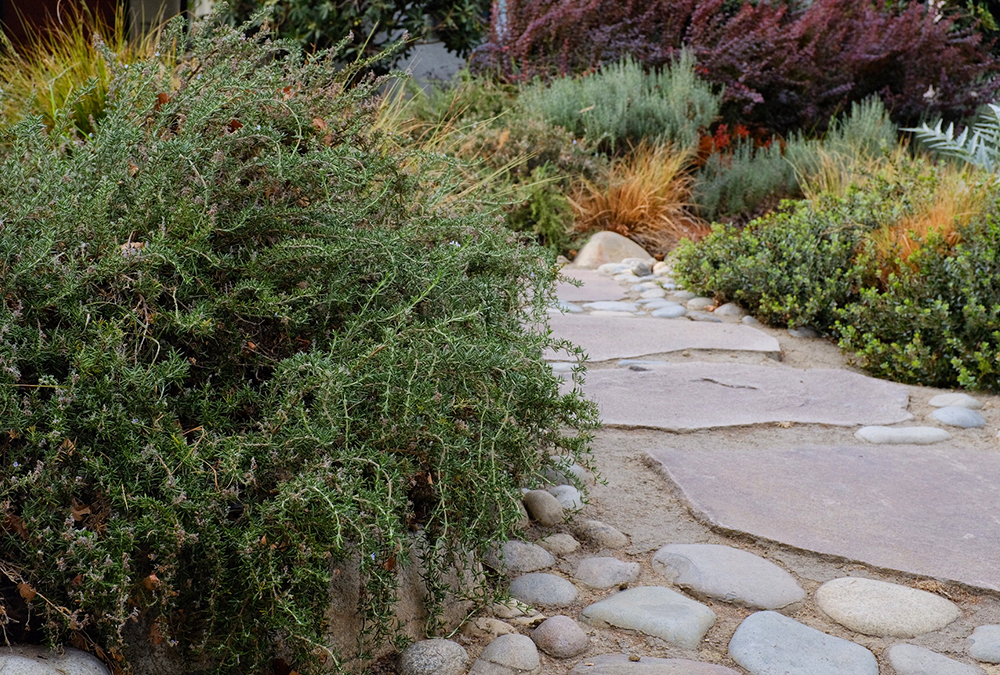
The idea of growing food can be intimidating for a lot of people, though growing herbs is really no different than growing most other plants—the only real difference is that you can eat them! If you have raised beds or a designated garden space, chances are you’re already growing a few herbs, but you don’t need a vegetable garden to grow herbs. Most perennial herbs are much less needy than your typical vegetable plants, and will often tolerate poor soil, harsh weather, and anything from full to partial sun. I’m not suggesting you go out of your way to challenge your new rosemary bush, just that you should think outside the vegetable beds.
Perennial herbs can and should be planted among your ornamental plants. In addition to their obvious culinary applications, herbs can be used as a ground cover, grasses, shrubs, hedges, even trees. The same herbs you use in your kitchen deserve a place in your garden among your ornamentals because not only are they just as attractive and versatile, but they’re also low maintenance and continually fragrant. Unlike the flowers that burst full of fragrant blooms once a year, many of these herbs offer a fragrant aroma year round that will also attract beneficial insects and pollinators to your garden.
Most herbs will thrive in full to partial sun and will often survive, but not likely thrive, with too much shade. Consider the eventual size and shape of the plant when choosing where to place it, as you would with ornamentals. Some herbs, like rosemary, are offered in a variety of growing habits, to be grown as a low trailing ground cover, a mid-sized hedge, or even a topiary! Planting your herbs close to your kitchen will make them more convenient for a quick harvest, and thus more likely to be used often.
Potted Herb Garden
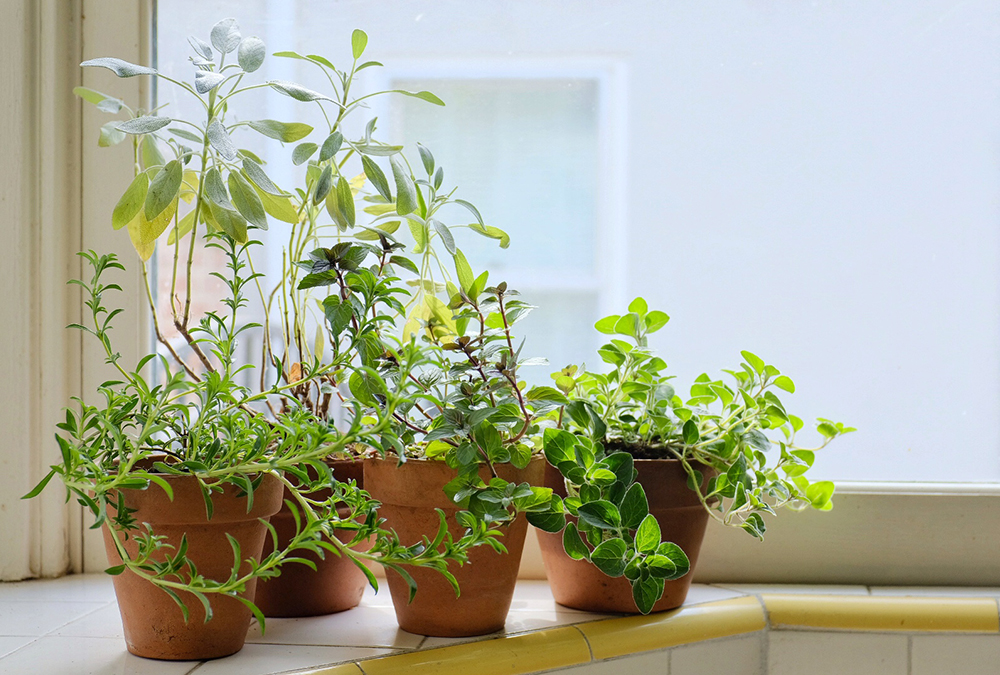
All herbs, whether annual or perennial, will live and grow happily in a container, and some herbs, such as mint, should only be grown in a container (so it doesn’t take over your garden). Potted herb gardens are also a great option for small spaces like balconies and patios. One advantage of potted herbs, especially in cold climates, is that they can be easily moved indoors in winter, where they can live out the colder months near a bright window.
As with most any potted plant, herbs should be planted in a container with drainage holes and well-drained soil. Because their roots will not have access to the same nutrients that naturally occur in the ground, it’s best to feed them regularly with a balanced organic fertilizer. Planting multiple herbs in one container is a great option, especially for those with limited space. When doing so, try placing taller herbs, like sage and parsley, near the center, and lower, trailing herbs, like oregano and thyme, around the edge.
Choosing Your Herbs
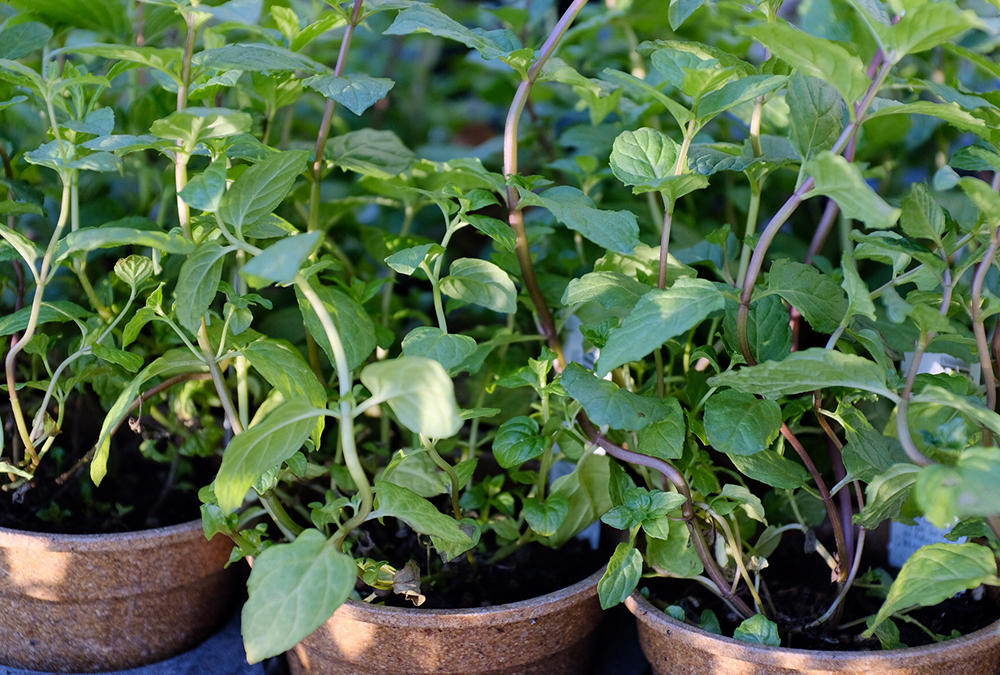
With so many different herbs available at the nursery, selecting the right ones for your garden can be fun, but also challenging. Not only are there many different species of herbs, but often each is available in different varieties.
Start by selecting a few herbs that you are familiar with, and that you find yourself using often already. Herbs such as rosemary, parsley, and oregano are relatively simple to grow indoors or out, and are used often in recipes. Next, select some herbs that you may be less familiar with. By planting herbs that you may have never cooked with before, you’ll challenge yourself to try new recipes and create new flavors in the dishes you normally prepare.
Some herbs, like mint, oregano, and sage are available in such a wide variety that it can be difficult to choose which one you’ll like best. So how do you decide? Taste it! When you’re at the nursery, pinch off a leaf and taste every herb before you buy it. In addition to flavor, herbs of the same species will often vary in color, size, shape, and cold hardiness. Sage, for instance, can be green, gray, purple, and even variegated. If you’re happy with the flavor, choose what you think will look best in your garden.
Common Holiday Herbs
Rosemary
Commonly used to season poultry or roasted vegetables, rosemary has a unique piney flavor. Rosemary is a very hardy herb, available in a variety of growing habits. Some varieties grow as a bush and others are low-growing “trailing,” though all are similar in flavor and interchangeable in cooking.
Sage
Culinary sage is a Mediterranean herb with a strong savory, earthy flavor that lends itself well to seasoning meats and roasted winter squash. Common garden sage is the most widely used in cooking, though culinary sage is available in a variety of colors—and not all types of sage are edible.
Thyme
This versatile herb can be cooked into a meal or added fresh at the end, to enhance the flavors of vegetables as well as fruits. Thyme is a low-growing herb, and although most varieties look similar, many of them offer unique flavors, such as lemon, orange, and caraway.
Parsley
Fresh parsley has a pleasant grassy flavor and is used often to flavor stock, or added near the end of a recipe to maintain its flavor and color. Parsley is a tropical biennial, most often grown as an annual, though it can be grown indoors over winter. The two common varieties are curly-leaf parsley and flat-leaf parsley, with flat leaf being the most common for cooking.
Mint
This popular herb is used widely in Mediterranean cooking to flavor lamb, but is also a well-known flavor in holiday treats such as candy canes. There are many varieties of mint, some with unique flavors such as chocolate, ginger, and apple. This fragrant perennial is easy to grow indoors or out, but wherever you choose to plant it, be sure it’s kept in a container, otherwise its aggressive roots will likely spread widely, becoming invasive.
Bay
The aromatic leaves of the bay tree are commonly used whole to flavor stocks and soups, then removed and discarded at the end of the cooking process. The leaves are harvested from the slow-growing bay laurel tree, which can grow to be over 50 feet tall in the wild, but is often pruned to a more manageable shrub or tree and can even adapt to being grown indoors.
Harvesting Herbs
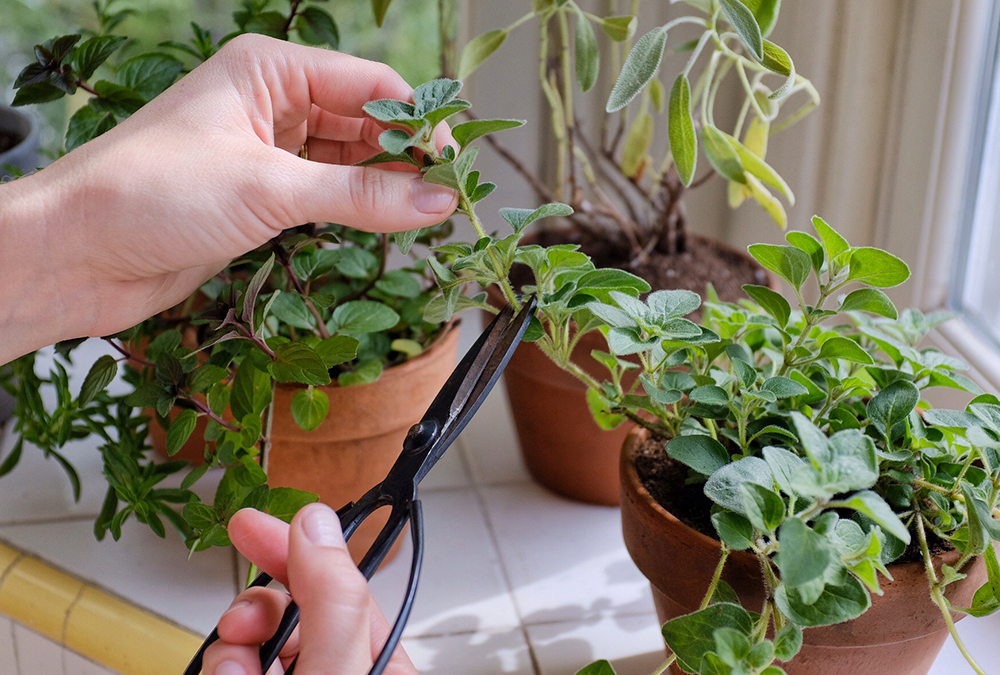
One of the best things about growing your own herbs is the opportunity to harvest exactly as much as you need, right when you need it. When harvesting herbs, it’s usually best to trim just as much as you need, rather than taking the entire plant. To harvest, trim above a leaf node. This will encourage branching to create a full, bushy plant with more usable leaves and a compact shape. Trim lightly with young herb plants to avoid injuring them. As a general rule, it’s best to never remove more than 1/3 of the vegetation from any plant. This allows the plant to maintain photosynthesis.
Cooking With Fresh Herbs
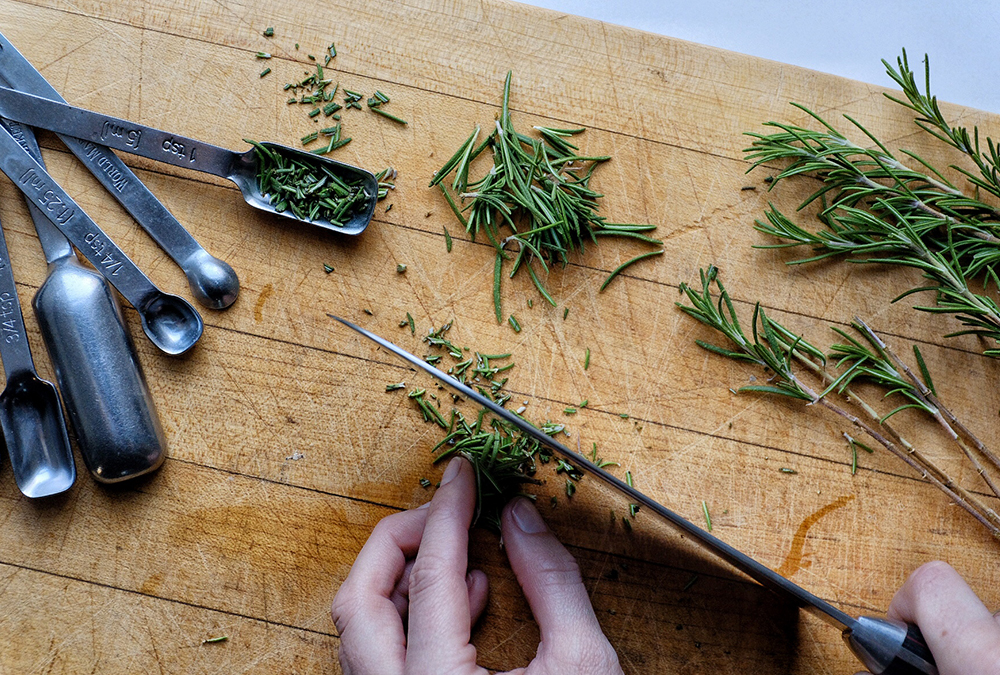
Of course, fresh herbs can be used in place of dry herbs in any recipe that calls for them; however, it’s usually best to add them in larger amounts and to add them later on in the process. As a general rule, you should use three times the amount of fresh herbs as you would dry. So if your stuffing recipe calls for one teaspoon of dried thyme, instead use one tablespoon of fresh thyme. It’s fine to add fresh herbs at the same point as you would dried herbs, but for the best flavor, and to better preserve their color, adding fresh herbs near the end of the process is often best.
Preserving Herbs
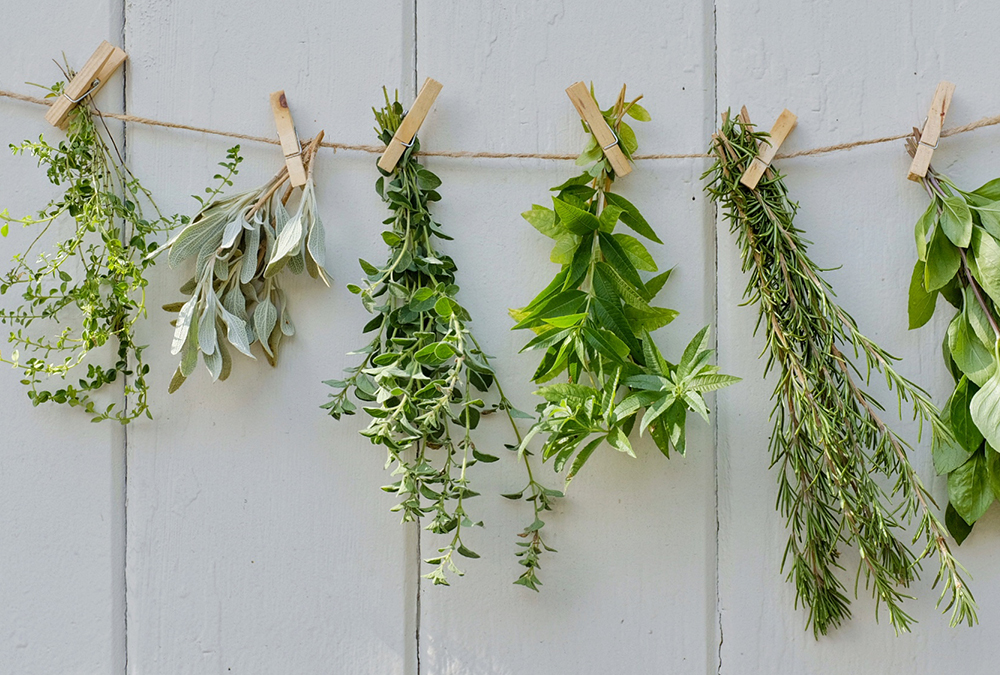
Fresh herbs are great, but as with growing fruits and vegetables, there are plenty of reasons to preserve a harvest. In order to maintain the size and shape of your herb plants, it’s good practice to give them a regular trimming, even if you’re not planning to use those herbs right away. You could toss the trimmings in the compost or preserve them for later use—or you just may end up planning your meal around that harvest!
Drying your herbs is one of the most simple and useful ways to preserve and store herbs for years to come. To dry them, use clothespins to hold bundles of cut herbs together along a string, and then hang the string in a dry, well-ventilated area, out of direct sunlight. This can be done indoors, or outside, depending on the weather. Once the herbs are completely dry and can be easily crumbled, they can be stored in a sealed glass jar for years. If you notice any condensation in the jar, the herbs have not dried completely, and should be left to finish drying before storing.
There are plenty of ways herbs can be preserved for different uses and gifts. Herb salt is made by muddling up a single herb or a combination of herbs in a bowl of salt. The salt will preserve the herbs, and the herbs will add unique flavors to the salt. Herb sugar can be made the same way but will not last as long on the shelf. Herbs can also be preserved for holiday decorations by weaving them into wreaths and crowns, or stringing them together as garlands. Rosemary works well for weaving and is used to make a crown for the bride at her wedding in some cultures.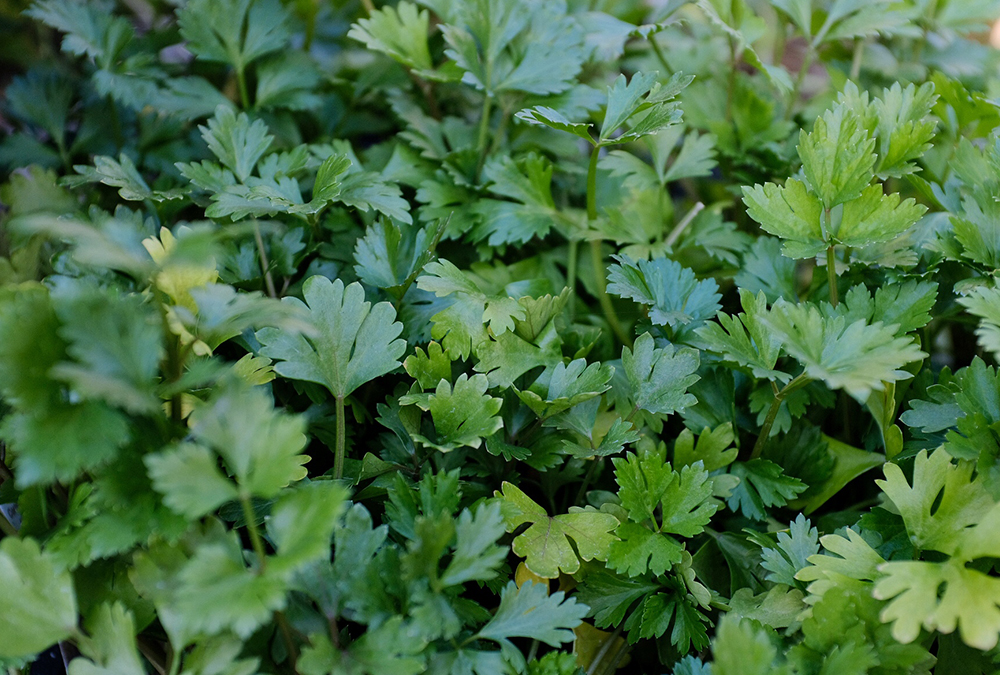
Every holiday dish, from sweet to savory, can be elevated by adding fresh herbs, and they don’t get any fresher than those you’ve just harvested from your garden. The flavor of fresh herbs is reason enough for most gardeners to grow them, but the convenience of having a variety of herbs on hand is priceless. So take a trip to your local nursery this month and get those herbs planted. Chances are, you’ll find a new secret ingredient for your signature dish, and possibly even save yourself a shopping trip this holiday season.



